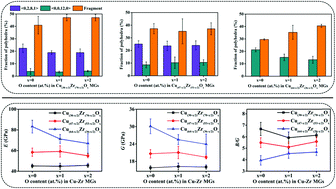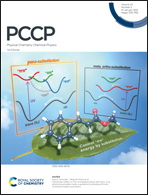Composition-dependent effects of oxygen on atomic structure and mechanical properties of metallic glasses
Abstract
Although minor alloying in metallic glasses (MGs) has been extensively investigated, the effect of O doping is still a debatable topic. In the present study, the atomic-level structures and mechanical properties of Zr-based MGs doped with different O contents have been analyzed using ab initio molecular dynamics simulations. It is revealed that O atoms prefer to bond to Zr atoms due to their low mixing enthalpy, and that O atoms degrade the properties of Zr-lean MGs but hardly affect the properties of Zr-rich MGs, with results suggesting a compositional dependence of O doping. For Zr-lean MGs, the fraction of full icosahedra, size of the medium-range-order clusters, Young's modulus and shear modulus decrease sharply with O content, while accompanied by a sharp increase of the non-Frank–Kasper polyhedra, and the ratio of bulk modulus to shear modulus and Poisson's ratio, indicating decreased strength and improved plasticity. For Zr-rich MGs, however, the above-mentioned structural and mechanical features experience little change or only change slightly after O doping, showing low oxygen sensitivity. It is shown that the high Zr content weakens the effect of Zr–O bonding to some extent. The present study not only sheds light on the atomic-level structures of O-doped MGs, which may provide guidelines for designing MGs with low-grade materials, but also helps to explain the previous conflicting results based on the composition-dependence effect.



 Please wait while we load your content...
Please wait while we load your content...